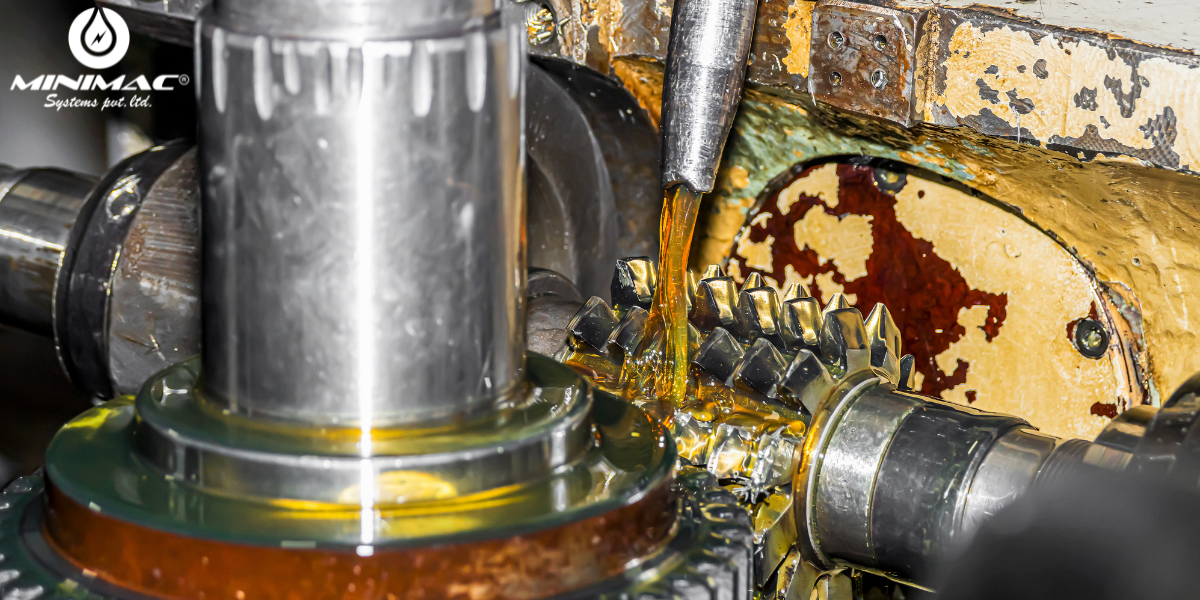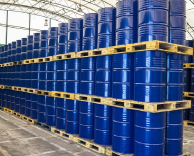Understanding the Hydraulic Oil Separation Method: Techniques, Applications, and Benefits
Introduction
In the realm of industrial machinery and equipment, hydraulic oil plays a pivotal role in ensuring seamless operation and efficient power transmission. However, the presence of contaminants such as water, dirt, and other particles can degrade the oil’s quality, leading to reduced equipment performance and potential failures. This is where the hydraulic oil separation method comes into play. In this article, we will delve into the significance of hydraulic oil separation, various techniques used in the industry, and the benefits it offers for maintaining optimal equipment health and productivity.

Hydraulic oil separation is a process designed to remove impurities from hydraulic oil, restoring its original properties and ensuring it meets operational standards. By employing specialized separation techniques, contaminants like water, air, and solid particles are effectively eliminated, prolonging the oil’s service life and reducing the risk of component wear and failure.
Regular hydraulic oil separation offers multiple advantages. First and foremost, it prevents the buildup of harmful substances that can cause corrosion, oxidation, and sludge formation. This not only enhances the oil’s lubricating properties but also contributes to maintaining the overall efficiency of the hydraulic system. Furthermore, hydraulic oil separation helps minimize maintenance costs, extend equipment lifespan, and reduce downtime, making it a crucial practice for industries relying on hydraulic systems.
Why is Hydraulic Oil Separation Important?
Oil testing serves as a diagnostic tool to evaluate the condition of the insulating oil used in transformers. By analyzing the oil’s composition and properties, experts can detect potential issues such as contamination, oxidation, or degradation. This enables early detection of problems, facilitating timely preventive maintenance or repairs.Hydraulic systems are the backbone of numerous industries, powering critical machinery and equipment used in construction, manufacturing, and transportation. These systems rely on hydraulic oil for power transmission, cooling, and lubrication. Over time, the oil can become contaminated with water, air, and particles, which can significantly impact its performance and the efficiency of the entire system. This is where hydraulic oil separation comes into play, providing a reliable solution to maintain oil quality and system performance.
Oil contamination can lead to various problems, such as reduced lubrication, increased friction, and accelerated component wear. Water, in particular, poses a significant threat as it can cause emulsification, leading to reduced oil viscosity and poor lubrication. Additionally, solid particles can cause abrasive wear on hydraulic components, leading to costly repairs and replacements.
Hydraulic oil separation is essential because it allows for the removal of these contaminants, ensuring that the oil remains in optimal condition. By using appropriate separation methods, industries can achieve cleaner oil, which translates to improved system efficiency, enhanced equipment reliability, and extended service life. This proactive approach not only prevents potential failures but also contributes to cost savings in terms of maintenance and replacement expenses.
Types of Hydraulic Oil Separation Techniques
Several techniques are employed to achieve effective hydraulic oil separation, each catering to different types of contaminants and operating conditions. The most common methods include:
1.Centrifugation:Centrifugation is a widely used technique that utilizes centrifugal force to separate contaminants based on their density. When hydraulic oil is spun at high speeds in a centrifuge, heavier contaminants such as water and solid particles are forced to the outer edges, while the purified oil collects in the center. This method is highly effective for removing water and solid particles from hydraulic oil.
2.Coalescence:Coalescence is a technique that involves passing the contaminated oil through a series of coalescing elements. These elements attract and merge small water droplets into larger ones, which are then separated from the oil due to their higher density. Coalescence is ideal for separating water from oil and is commonly used in systems where water contamination is a concern.
3.Filtration:Filtration involves passing the contaminated oil through a filter media that traps solid particles, dirt, and debris. This method is effective in removing solid contaminants and is often used in conjunction with other separation techniques for comprehensive oil purification.
Vacuum Dehydration: Vacuum dehydration is a process that uses vacuum pressure to remove dissolved water and gases from hydraulic oil. By lowering the pressure, the boiling point of water is reduced, allowing it to evaporate at lower temperatures. This technique is particularly useful for removing both free and dissolved water, as well as entrained gases from the oil.
Applications of Hydraulic Oil Separation
Hydraulic oil separation finds its application in a wide range of industries where hydraulic systems are used, such as:
- Manufacturing:Hydraulic oil separation is essential in manufacturing industries to maintain the efficiency and reliability of hydraulic presses, injection molding machines, and other critical equipment.
- Construction and Heavy Machinery:Construction equipment like excavators, loaders, and bulldozers rely on hydraulic systems for their operation. Regular oil separation helps prevent failures and downtime, ensuring that the machinery performs optimally even in demanding conditions.
- Marine and Offshore:Hydraulic systems used in marine and offshore applications are exposed to harsh environments and the risk of water contamination. Hydraulic oil separation is vital to prevent emulsification and ensure the reliable operation of cranes, winches, and steering systems.
- Aerospace: Aerospace applications require precise control and high performance of hydraulic systems. Oil separation ensures that the hydraulic oil remains free from contaminants, enabling safe and reliable operation.
Benefits of Regular Hydraulic Oil Separation
Implementing a regular hydraulic oil separation program offers numerous benefits for equipment owners and operators, making it an integral part of a comprehensive maintenance strategy:
- Enhanced Equipment Performance:By removing contaminants, hydraulic oil separation restores the oil’s original properties, ensuring that it provides adequate lubrication, cooling, and power transmission. This results in smoother operation, reduced friction, and improved overall performance.
- Extended Equipment Lifespan:Contaminants can accelerate wear and tear on hydraulic components, leading to premature failure. Regular oil separation helps minimize component wear, extending the lifespan of equipment and reducing the need for costly replacements.
- Reduced Maintenance Costs:Preventing contamination-related issues reduces the frequency of maintenance and the need for repairs. This translates to lower maintenance costs and minimizes unplanned downtime.
- Improved System Efficiency:Clean hydraulic oil allows the system to operate at peak efficiency, reducing energy consumption and improving productivity. This is especially important in industries where high efficiency and productivity are key performance indicators.
- Minimized Environmental Impact:Proper hydraulic oil separation and purification reduce the need for frequent oil changes and disposal, contributing to a more sustainable and environmentally friendly operation.
Common Issues Detected Through Hydraulic Oil Separation
Hydraulic oil separation can help identify a range of issues that may affect the performance and longevity of hydraulic systems, such as:
- Water Contamination:Water in hydraulic oil can cause emulsification, reduced viscosity, and poor lubrication, leading to accelerated component wear and potential failure.
- Particle Contamination:Dirt, metal particles, and other debris can cause abrasive wear, leading to damage to hydraulic components and reduced system efficiency.
- Oxidation and Sludge Formation:Oxidation of hydraulic oil can lead to the formation of sludge and varnish, which can clog filters and reduce the oil’s cooling and lubricating properties.
How to Interpret Hydraulic Oil Separation Results
Interpreting the results of hydraulic oil separation is crucial to understanding the condition of the oil and making informed maintenance decisions. Professionals with expertise in oil analysis and system maintenance evaluate the results to determine the type and extent of contamination present.
For example, high water content detected through centrifugation or coalescence tests may indicate leaks or condensation issues, requiring further investigation. Similarly, the presence of solid particles identified through filtration may suggest a need for improved filtration or system flushing.
Minimac Systems' Hydraulic Oil Filtration Solutions
To ensure optimal performance and reliability of hydraulic systems, Minimac Systems offers Hydraulic Oil Filtration Systems designed to remove contaminants like water, dirt, and particles that degrade hydraulic oil. Our systems are built to handle the most challenging industrial environments, utilizing advanced separation techniques such as filtration, vacuum dehydration, and coalescence to purify the oil and restore its original properties.
With our filtration solutions, industries can maintain oil cleanliness levels that meet or exceed industry standards, reducing the risk of equipment failure and extending the service life of critical machinery. The benefits include enhanced equipment reliability, reduced maintenance costs, and lower energy consumption, making Minimac’s filtration systems a crucial part of a comprehensive hydraulic maintenance strategy.
By investing in Minimac Oil Filtration System, industries can significantly reduce downtime, prolong the life of hydraulic components, and maintain smooth, efficient operations even in the most demanding conditions.
Conclusion
In conclusion, hydraulic oil separation is a vital process for maintaining the performance, reliability, and longevity of hydraulic systems. By employing techniques such as centrifugation, coalescence, filtration, and vacuum dehydration, contaminants like water, dirt, and air can be effectively removed, restoring the oil’s quality and ensuring optimal system operation.
The benefits of regular hydraulic oil separation are manifold, ranging from enhanced equipment performance and extended lifespan to significant cost savings and reduced environmental impact. By incorporating oil separation as part of a proactive maintenance strategy, industries can unlock the full potential of their hydraulic systems, ensuring they remain efficient, reliable, and ready to tackle the challenges of modern industrial applications.





